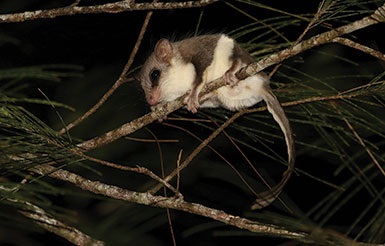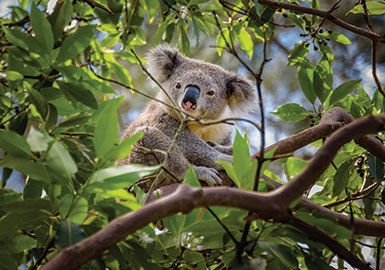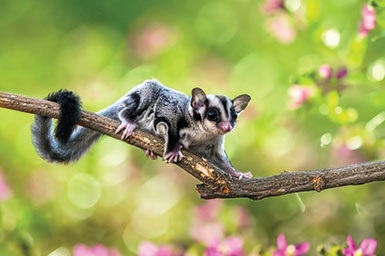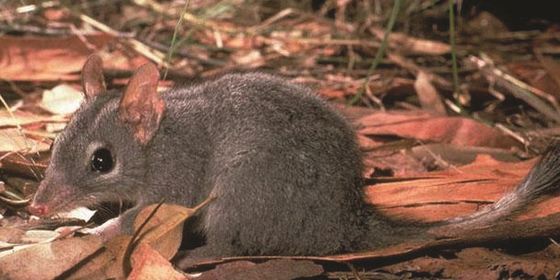Gympie Wildlife
Gympie Regional Council is home to a variety of wildlife.
Council has identified 12 species of native animals described as our Gympie Guardians.
These animals are important because they support many other species as a food source or by creating habitat. Council wants to understand the numbers and locations of our Gympie Guardians and other priority species.
To do this, we have developed Wildwatch Gympie. Wildwatch Gympie is an online service that lets members of the community share sightings of our region’s threatened and priority species. It also lets us record native animal vehicle strikes.
You can use Wildwatch Gympie on your smartphone, tablet, or on a desk-top computer.
Our Gympie Guardians are:
Eastern Yellow Robin
Eopsaltria australis

This little bird is often seen around the Gympie region. It isn't bothered by humans. Its presence tells us that our bushland is healthy and able to support a variety of native bird species.
Feathertail Glider
Acrobates pygmaeus

Feathertail Gliders are the world’s smallest gliding mammal. They are capable of gliding up to 28 meters using their long feather-like tail to steer and brake.
Great Barred Frog
Mixophyes fasciolatus

This frog is relatively widespread and common in the Gympie region. Its presence tells us our waterways are healthy.
Koala
Phascolarctos cinereus

Koala populations in Australia are rapidly declining. They sleep for up to 20 hours a day perched high up in the branches of gum trees. Koalas are one of a few animals that can survive on a diet of eucalyptus leaves, which are extremely poisonous to most other animals.
Mary River Cod
Maccullochella mariensis

The Mary River Cod is one of Australia's most endangered freshwater fish. It can be found in the freshwater rivers and streams of the Mary River Catchment.
Noisy Pitta
Pitta versicolor

The Noisy Pitta is a colourful, charismatic bird found in rainforest and riparian areas. It is a shy bird that is more often heard than it is seen. It has a distinctive 'walk to work' territorial song that starts at daybreak and can be heard for most of the day in Spring and early Summer.
Ornate Rainbowfish
Rhadinocentrus ornatus

This small and slender fish has many colour variations. The habitat of this fish has been damaged throughout much of South East Queensland.
Platypus
Ornithorhynchus anatinus

The shy platypus has a bizarre appearance, with the bill of a duck and tail of a beaver. Their numbers have reduced in South East Queensland, but they are still present in parts of the Gympie region.
Sugar glider
Petaurus breviceps

These marsupials have a membrane between their front and back legs that stretches out when they leap from a tree. This means they can glide for up to 45 meters! They love sweet food and play an important role in the pollination of nectar-producing plant species.
Topknot pigeon
Lopholaimus antarcticus

The Topknot Pigeon is highly sociable and tends to be seen in flocks. They cover great distances in search of fruit-bearing trees.
Wompoo Fruit-Dove
Ptilinopus magnificus

The Wompoo Fruit-Dove is perhaps the most beautiful of all doves found in Australia. They do not travel large distances. Instead, they move around small areas in search of fruit-bearing trees.
Brush-tailed Phascogale
Phascogale tapoatafa

A small hollow-dwelling carnivorous marsupial that is little known but extremely striking. Its presence in the Gympie region is an indicator of the presence of suitably large areas of connected habitat with sufficient densities of large, old, hollow-bearing trees in parts of the region.